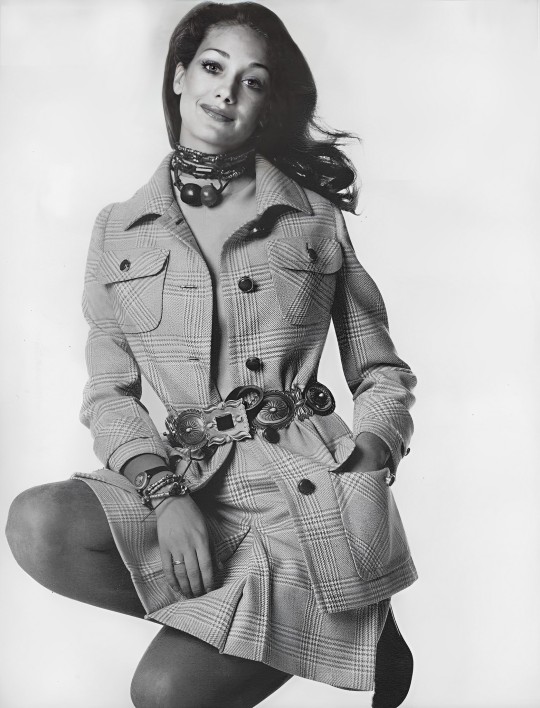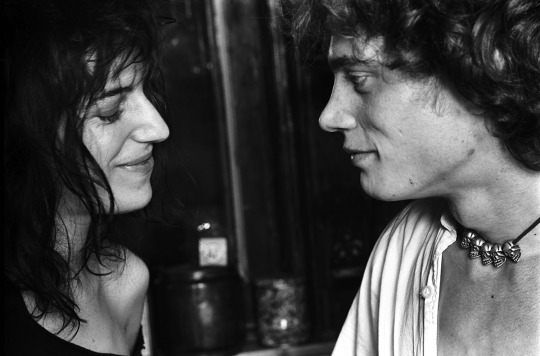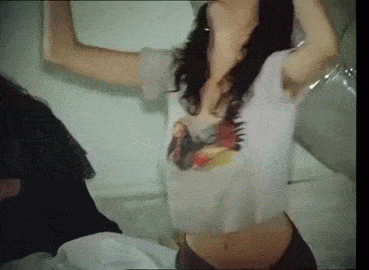#bruce rudow
Explore tagged Tumblr posts
Text

US Vogue February 1, 1970
Marisa Berenson wears a long belted jacket suit, with beige and white biscuit checks, the bush jacket tightened by large silver ties on a dress that looks like a shirt and a skirt: white top, checkered pleats. Suit by Zelinka Matlick, of Anglo Fabrics. Amber ball necklace: Escale, Henri Bendel. Neck and wrist thongs, ring, by Bruce Rudow. Obrey watch. The tights by Bewitching. Hairstyle by Maury Hopson.
Marisa Berenson porte un tailleur veste longue ceinturé, à carreaux biscuit beige et blanc, la veste brousse resserrée par de gros liens argentés sur une robe qui ressemble à une chemise et une jupe : haut blanc, plis à carreaux. Costume par Zelinka Matlick, d'Anglo Fabrics. Collier boule d'ambre : Escale, Henri Bendel. Strings de cou et de poignet, anneau, par Bruce Rudow. Montre Obrey. Le collant par Bewitching. Coiffure par Maury Hopson.
Photo Irving Penn vogue archive
#us vogue#february 1970#fashion 70s#seventies#1970#spring/summer#printemps/été#zelinka matlick#anglo wool#henri bendel#bruce rudow#bewitching#maury hopson#marisa berenson#irving penn#tailleur#suit
18 notes
·
View notes
Text

Patti Smith’s Just Kids captures the epicenter of art and grime that was New York in the 1970s. She centers the story upon the unorthodox girl she was in her twenties, and her predestined relationship with the late photographer Robert Mapplethorpe. The story Smith unfolds is a mesmerizing cluster of moments, each as brilliantly imaged as her cherished blue star. While her autobiographical account is rooted in the happenings of her intimate routine, the novel is read as a field guide to her version of the vast city. Yet, Smith disregards the objective city by blending the real and the otherworldly in her seamless streams of consciousness. The constant that threads together the contradiction of her city life is her love for Robert. Their relationship is celestial; they are two soulmates brought together almost divinely, and yet their closeness is physically distant and intertwined with the figures around them. Intimacy and multiplicity are figuratively mutually exclusive yet in practice interdependent in Smith’s depiction of New York.
The structure of Just Kids is artefactual, organized by a series of moments through which the reader is guided like an observer in a museum. Smith is a skillful curator, constructing her personal enclave within the larger city. One of these moments is Christmas at her and Robert’s first apartment:
“He liked the boxes of Joseph and often transformed significant bits of jetsam, colored string, paper lace, discarded rosaries, scrap, and pearls into a visual poem. He would stay awake late into the night, sewing, cutting, gluing, and then adding touches of gouache. When I awoke there would be a finished box for me, like a valentine. Robert made a wooden manger for the little lamb. He painted it white with a bleeding heart and we added sacred numbers entwining like vines. Spiritually beautiful, it served as our Christmas tree. We placed our gifts for one another around it.” (Smith 51-52) Smith illustrates moments palpably to craft their intimate world. She and Robert physicalize their isolation from the outside; the act of making their own original talismans mimics creating a new reality. Smith’s description of Robert fashioning the manger is almost ironic: it depicts him in reference to the stereotype of handy man of the house, constructing practical objects for his family. Their concept of practical or necessary, however, is unusual. Smith cherishes the manger painted with a “bleeding heart” and “sacred numbers”, despite having little functional furniture in their apartment. (51-52) The manger serving as a Christmas tree also holds meaning. The two Catholics are at once rejecting the tradition of the classic decorated tree and celebrating their own eccentric version of the popular holiday. Thus, Smith’s capture of this creative moment is both decidedly intimate yet still connected to the multiplicity of daily life.

These snapshots of creation may appear to some readers to trivialize her journey of self-discovery or render it superficial, but they do not. In broad terms, the moments she writes are the intricate pieces of the mosaic that is her perception of New York: each piece is different, entirely sustainable as a world of its own, yet fits perfectly within the grand scheme. Hence, Smith’s structure enables the formation of her intimate world but grounds it in the colorful context of the city, successfully interconnecting intimacy and multiplicity.
Furthermore, Smith’s novel entertains a duality between the real and the unreal. Her dichotomized place in New York is introduced in early stages of Smith and Robert’s relationship, as Smith describes:
“One Indian summer day we dressed in our favorite things (…) we took the subway to West Fourth Street and spent the afternoon in Washington Square. We shared coffee from a thermos, watching the stream of tourists, stoners, and folksingers. Agitated revolutionaries distributed anti-war leaflets. Chess players drew a crowd of their own. Everyone coexisted within the continuous drone of verbal diatribes, bongos, and barking dogs.” (Smith 47)
This scene offers an image rife with energy and movement in the public environment. Yet, while Smith speaks of coexistence, she refrains from placing herself into the context she defines. She serves only as the observer, sipping coffee with Mapplethorpe gazing onto the outside from within their transcendent experience, displaying an otherwise dynamic sequence as coldly as a still-life. It is only when an older couple comments on her and Robert’s roles that Smith closes their distance from their surroundings. The woman tells the accompanying man to take a picture of the two characters that seem like artists to her. “’Oh, go on,” he shrugged. They’re just kids.” (Smith 44) Significant enough to inspire the title, this encounter introduces the ideas of intimacy and multiplicity within Smith’s world and the city around her. As much as she and Robert seek to elevate and enchant their realities, they have become stereotypical, two of many inhabiting the city. They may present themselves as the personas associated with their alternative lifestyle, but ultimately Smith recognizes their commonality. In this way, she calls the distinction between intimacy and multiplicity into question, refusing to abandon one to obtain the other.
The line between real and unreal is rendered particularly nebulous in the context of the Chelsea Hotel.

“In between I clock the action. Eyeing the traffic circulating the lobby hung with bad art. Big invasive stuff unloaded on Stanley Bard in exchange for rent. The hotel is an energetic, desperate haven for scores of gifted hustling children from every rung of the ladder. Guitar bums and stoned-out beauties in Victorian dresses. Junkie poets, playwrights, broke-down filmmakers, and French actors. Everybody passing through here is somebody, if nobody in the outside world.” (Smith 91)
The graphic use of italics here visually signals a shift in Smith’s narrative. It underlines the dreamlike sequence that is Smith and Mapplethorpe’s experience at the Chelsea Hotel, distancing the people and happenings in the hotel from the urban exterior. The mention of “stoned out beauties in Victorian dresses” widens this distance by adding an epochal dimension to the hotel’s otherworldliness. (Smith 91) Lastly, the last sentence draws a boldly strict line between the hotel and the “outside world”. (Smith 91) Yet, the ideas of being “somebody” at the Chelsea and “nobody” in the vaster realm of Manhattan are inextricably linked. (Smith 91) Within the environment of the Chelsea, Smith belonged to a circle of drug-infused artists and patrons: society’s misfits bound together through shared estrangement. They had become somebodies amongst themselves evidently because they had all experienced the isolation of having been nobodies. Therefore, Smith underlines a causal relationship between the intimacy of the Chelsea Hotel and the inhabitants’ incongruence with New York city’s multiplicity.
Smith’s definition of intimacy is explored in distinct instances of Just Kids. It is a central theme to Smith and Mapplethorpe’s epic love story. It appears that their relationship guides the plot’s development, and hence mirrors Smith’s grander depiction of the city in terms of intimacy. From the moment they meet, Smith and Mapplethorpe are drawn to each other. Their initial encounters recall fairytale lovers who credit fate for their meeting. Disregarding courtship, they readily accept each other into their lives, as Smith states not long after their first meeting, “(...) I understood that in this small space of time we had mutually surrendered our loneliness and replaced it with trust”. (Smith 40) From this moment, much of Smith’s writing about their relationship is description of their routine. Painting and creating side by side was their ritual; in this way their daily lives were engulfed in the other’s. Despite this, Smith consciously refrains from including information that would define their relationship. While they were in love or perhaps they cared profoundly for the other, the lack of romantic intimacy conveyed alluded to the idea that their relationship was platonic. Smith’s ambiguous account of her and Robert’s bond calls intimacy into question, and perhaps deliberately pushes against its singular definition.
Multiplicity also plays a part in building Smith and Mapplethorpe’s intricate relationship. The number and diversity of figures they encounter allows them to create their intimate world away from reality. At the Hotel Chelsea, they meet an array of people including Mr. Bard, Harry Smith, Peggy Biderman, Ann Powell, Bruce Rudow, Sandy Daley, and Matthew Reich. Each person elicited a form of self-discovery for both Smith and Mapplethorpe. The introduction of these figures play an integral role in both of their artistic pursuits, and therefore reinforce their mutual creative inspiration for one and other. Thus, their intimacy is invigorated by the multiplicity of creative characters around them.
However, Smith and Mapplethorpe’s world undergoes growing tension throughout the novel. One instance in the novel that represents a striking turning point in their relationship occurs when Robert goes to an abandoned hospital and finds a fetus preserved in jar. Convinced he should transform the fetus into art, he steals the jar, but on their way home he inadvertently drops it. Smith describes the effect of this accident with the following citation:
“The purloined jar had sat on a shelf for decades, undisturbed. It was almost as if he had taken its life. 'Go upstairs,' he said. 'I'll clean it up.' We never mentioned it again. There was something about that jar. The shards of heavy glass seemed to foreshadow the deepening of our days; we didn’t speak of it but each of us seemed inflicted with a vague internal restlessness.” (Smith 69)
The jar appears to be a symbol that represents a tonal shift in Smith’s description of their relationship. Though Robert did not actually take the fetus’s life, Smith mentioning this represents birth and death simultaneously. The incident undoubtedly brought her own abortion and the trauma associated with it to mind. It could also be said that the scene underlines the limitations of Smith and Mapplethorpe’s nontraditional intimacy in terms of family-making. In this sense, the jar evokes the multiplicity within the intimacy, or the complexity that is the essence of Smith and Mapplethorpe’s feelings for each other, and for their perceptions of themselves. In fact, it is the very multiplicity within their relationship that eventually redraws its own confines. Thus, the “internal restlessness” Smith refers to foreshadows the increased strain on their world and the unease that accompanies these complexities. (69)
The themes of intimacy and multiplicity can be perceived to define not only the relationship between the two central characters of Just Kids, but also urban life itself. Manhattan is the singular backdrop for this story. This island, surrounded by water yet the heart of the world, is the essence of intimacy within multiplicity, of a patchwork of surface, sound, sight, scent, and taste. At any moment, this kaleidoscope of experience can collapse or delicately fold into the intimacy of a bedroom, a café table, a hospital bed. The structure of the book, the otherworldliness Smith references, and Robert and Patti’s complex relationship strengthen these interconnections between intimacy and multiplicity that are central to her New York story.
2 notes
·
View notes
Text

US Vogue February 1, 1970
Marisa Berenson wears a belted tunic and skirt in a beige and brown diamond print. By Leslie Fay, from Arnel and Fortrel (Fisher & Gentile fabric). Necklace: Escale, Henri Bendel. Bruce Rudow ring. Hanes tights. Fashion craft shoes. Maury Hopson headdresses.
Marisa Berenson porte une tunique et une jupe ceinturées dans un imprimé losange beige et marron. Par Leslie Fay, de Arnel et Fortrel (tissu Fisher & Gentile). Collier : Escale, Henri Bendel. Bague Bruce Rudow. Collants Hanes. Chaussures d'artisanat de mode. Coiffure Maury Hopson.
Photo Irving Penn vogue archive
#us vogue#february 1970#seventies#1970#fashion 70s#spring/summer#printemps/été#leslie fay#arnel and fortrel#henri bendel#bruce rudow#hanes tights#maury hopson#marisa berenson#irving penn
16 notes
·
View notes
Text

US Vogue August 15, 1968 ❤️❤️❤️❤️❤️
Model Ann Turkel
A coat to get all fired up about, flame-dyed mink with smoky black streaks going round and round from small rolled collar to just below the knee-here, snugged in close with a star-buckled, silvery-studded belt over fire-engine patent over-the-knee boots. By Christian Dior Furs, New York. The flicker of taupey-pink lipstick: Christian Dior #18. Flemming for Capri earrings. American Authentics bracelets. Belt by Bruce Rudow: Henri Bendel. Sant'Angelo for Crescendoe Superb gloves.
Hair François of Kenneth
Photo Irving Penn
vogue archive
#us vogue#august 1968#fall/winter#fashion 60s#swinging sixties#french touch#haute couture#christian dior#red fur#ann turkel#irving penn#christian dior beauty#american authentics#capri jewel#bruce rudow#superb gloves#henri bendel#françois of kenneth#chic fur#knee boots
10 notes
·
View notes